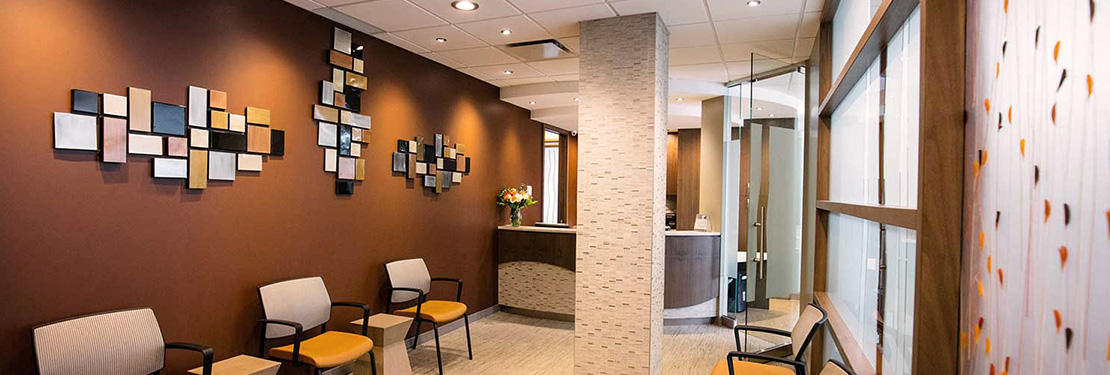Even when you practice daily dental hygiene and visit your dentist regularly for cleanings, stubborn bacteria and dental tartar buildup can create dental problems. Injuries can also impact the living tissue inside a tooth, even when the outside seems healthy. Fortunately, a root canal procedure can help save a tooth when the inside is damaged.
A root canal procedure can take between 30—90 minutes, depending on the complexity of the treatment. Preparation can add several minutes, from setting up the procedure to anesthesia. Learn about the root canal procedure, when it might be necessary, and what affects your treatment timeline.
Understanding Roots & Canals
A root canal, or endodontic treatment, is performed on the tooth’s inner layer. The visible part of the tooth above the gum line is only one-third of the tooth, like a carrot in soil. The hard outer layer (enamel) and the dense middle layer (dentin) protect the jelly-like inner layer (pulp).
The pulp is a bundle of nerves, blood vessels, and connective tissue. Pulp provides nutrition for the tooth and helps secure the tooth in place. The nerves also detect temperature and pressure, so you can control how much bite force you need while chewing.
Pulp is contained inside the tooth in canals or pathways. The time you spend in the dentist’s chair during your treatment can depend on the tooth’s size and how many canals need to be cleaned.
For example, your front teeth (incisors and canines) have a single canal. Your back teeth have more. Premolars have 2, and molars can have 3–4.
When Is a Root Canal Necessary?
A root canal may be necessary when the pulp inside the tooth is damaged or infected. Inflammation or infection can spread from the pulp to surrounding tissue in the mouth, including other teeth, gums, and facial tissue. An infection can also affect the jaw and face or enter the bloodstream, making its way to other body parts.
Receiving treatment as soon as possible is crucial for reducing risks. Removing the pulp can protect your oral health and overall body health. It can also save the tooth, as the outer part of a tooth can survive without the living tissue inside, thanks to the tissue that surrounds it.
Common causes of pulp damage include:
- A chip or crack in the tooth
- Multiple dental procedures on the same tooth
- Significant tooth decay due to an untreated cavity
- An injury to the tooth (even if the outside is undamaged)
Damaged pulp can also cause persistent and uncomfortable symptoms, like:
- Increased sensitivity to heat or cold
- Bad breath
- Tooth discolouration
- Gum swelling
- Loose teeth.
Removing the pulp can help relieve symptoms.

Root Canal Procedure
Knowing what to expect during a root canal treatment can help ease your mind about the procedure.
Step 1: Anesthetic
Before beginning the procedure, the dentist can apply numbing medication on the gum near the affected tooth. Then, a local anesthetic can be injected into the gum. Local anesthesia works within 10 minutes and can last 60 minutes. Similar to receiving a filling, you’ll remain awake during the procedure, but the anesthetic can prevent you from feeling discomfort.
Step 2: Removing the Pulp
After the tissue is numbed, the dentist creates a small opening in the crown (top of the tooth) to expose the inner tooth. Then, the dentist uses fine detail instruments to remove the pulp carefully. Removing the pulp takes up most of your appointment time, as the dentist must completely clean the canals.
Step 3: Antibiotics & Sealer
Coating the inside of the tooth with antibiotics helps ensure the infection is dealt with thoroughly and prevents reinfection. Your dentist may also prescribe oral antibiotics to prevent the infection from spreading to other tissue.
The dentist then fills the root canal with an artificial pulp, a rubber-like material called gutta-percha, to help preserve the tooth.
Step 4: Filling
The dentist finishes the procedure by closing the small opening in the top with a temporary filling. The temporary material protects and seals the hole until a permanent filling or restoration can be completed.
The placement of a permanent filling is typically completed at a second appointment, depending on the filling chosen.
The permanent filling depends on the strength of the remaining tooth. For example, molars must withstand significant pressure to chew. Therefore, a crown could help strengthen the tooth to improve function. Additionally, the saved tooth may be strong enough for a bridge, an option to replace missing teeth.
Your dentist will discuss the types of permanent fillings with you and recommend an appropriate option for your oral health needs.
Preserve Your Smile
A root canal can help save a damaged tooth, relieve discomfort, and preserve your smile. Restoring your tooth can help you enjoy the same foods and prevent the complications of tooth loss. Visit Ti Dental, and our team will work with you to ensure you’re as comfortable as possible. From routine dental exams to restorative procedures, we’re passionate about our patient’s smiles. Request an appointment today!








